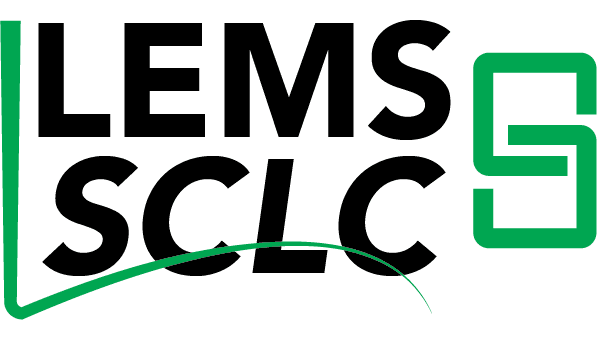
Lung cancer remains one of the deadliest forms of cancer worldwide. It is responsible for more cancer-related deaths than the next five deadliest forms of cancer combined, including breast cancer. Small cell lung cancer (SCLC) accounts for a significant portion of these cases. Among the various complications and comorbidities associated with SCLC, Lambert-Eaton Myasthenic Syndrome (LEMS) stands out due to its unique pathophysiology and impact on patient quality of life.
There is an urgent need for research into the relationship between these seemingly unconnected conditions. Understanding this association can better facilitate advancements in medical research and treatments.
But first, we need to understand how often these dual diagnoses occur.
The Need for Research
Lung cancer research has been historically underfunded and requires increased attention and investment. The private sector can play a pivotal role in driving innovation and accelerating scientific discovery. By supporting research initiatives, we can improve patient outcomes and ultimately save lives.
Accurately assessing the frequency of comorbidities is a crucial step toward effectively managing SCLC and its associated conditions. By quantifying the prevalence of LEMS and other complications, healthcare providers can tailor treatment plans and optimize patient care.
“Since we unfortunately do not cure most patients with lung cancer, symptom management is even more important than usual. Rare and treatable conditions like LEMS are frequently under-diagnosed, and such a study would help identify these patients and get them to optimal treatment,” said David Carbone, MD, PhD, Professor of Medicine at The Ohio State University and Director of the James Thoracic Oncology Center.
About Small Cell Lung Cancer
SCLC is a fast-growing type of lung cancer that accounts for about 10-15% of all lung cancer cases.
Each year, 30,000-35,000 people are diagnosed with SCLC in the United States alone.
SCLC is characterized by small, oval-shaped cells. It is known for its aggressive nature and rapid metastasis. With treatment, the median survival rate of SCLC patients is just 12-16 months for limited-stage cancers and 7-11 months for extensive-stage cancers.
This cancer type is strongly associated with smoking, although non-smokers can also develop SCLC. The primary treatment options include chemotherapy, radiation therapy, and immunotherapy, with ongoing research exploring targeted therapies and novel treatment combinations.
What is Lambert-Eaton Myasthenic Syndrome (LEMS)?
LEMS is a rare autoimmune disorder that affects the neuromuscular junctions, leading to muscle weakness and fatigue.
In LEMS, the body’s immune system mistakenly targets and attacks voltage-gated calcium channels on the nerve endings. This attack impairs the release of acetylcholine, a neurotransmitter essential for muscle contraction, resulting in the characteristic symptoms of muscle weakness and fatigue.
Symptoms of LEMS
The symptoms of LEMS primarily involve muscle weakness and fatigue, which can significantly impact a patient's quality of life. Key symptoms include:
- Proximal muscle weakness. This typically affects the upper legs and hips, making it difficult to walk, climb stairs, or rise from a seated position.
- Fatigue. Generalized fatigue and muscle stiffness, which worsen with activity.
- Eyelid drooping (ptosis). Due to muscle weakness around the eyes.
- Dry mouth and eyes. Resulting from autonomic nervous system involvement.
- Difficulty swallowing and speaking. In severe cases, patients may experience problems with swallowing and speech.
Diagnosing LEMS
Diagnosing LEMS involves a combination of clinical evaluation and diagnostic tests. These include:
- Medical history and physical examination. Assessing the patient's symptoms and medical background.
- Antibody blood test. Detecting antibodies against voltage-gated calcium channels, which are present in most LEMS patients.
- Electromyography (EMG). Measuring the electrical activity of muscles to confirm the diagnosis.
- Chest imaging. Such as X-rays or CT scans, to check for underlying lung cancer, especially in patients with newly diagnosed LEMS.
Treatment of LEMS
The treatment of LEMS focuses on managing symptoms and addressing the underlying cancer (if present). Key treatment strategies include:
- Cancer treatment. If SCLC is detected, treating the cancer with chemotherapy, radiation therapy, or immunotherapy can lead to significant improvement in LEMS symptoms.
- Medications. To improve nerve-muscle communication, such as calcium channel agonists and intravenous immunoglobulin (IVIG).
- Immunosuppressive drugs. To reduce the immune system's attack on the neuromuscular junction.
- Plasmapheresis. A procedure to remove harmful antibodies from the blood.
What We Know About LEMS and SCLC
The relationship between LEMS and SCLC is well-documented, with approximately 2-3% of SCLC patients developing LEMS. This association is due to the paraneoplastic nature of LEMS, meaning it occurs due to an immune response to cancer.
In some cases, LEMS can precede the diagnosis of SCLC, serving as an early indicator of the disease. This makes LEMS a significant comorbidity and a potential marker for early detection of SCLC.
Uncovering the Prevalence of LEMS-SCLC
There is an urgent need to understand the intersectionality of LEMS and SCLC better. First, we need to uncover the true incidence and prevalence of LEMS within the SCLC community in the United States. This is vital information since LEMS may be undiagnosed in SCLC patients, and it can be challenging to distinguish LEMS symptoms from the side effects often associated with aggressive SCLC therapies.
Once we know the size of this patient population, we can explore the paradoxical outcomes of LEMS-SCLC patients. For reasons that remain unclear, the presence of LEMS with SCLC has been shown to improve survival independent of other variables.
The Role of Screening and Early Detection
Early detection of LEMS and its association with SCLC can significantly improve patient outcomes. Low-dose CT scans for high-risk populations, particularly smokers, have been instrumental in early lung cancer detection. For LEMS, identifying symptoms early and conducting appropriate diagnostic tests can lead to earlier cancer diagnosis and treatment.
Research and Advancements in Treatment
Recent advancements in treating LEMS and SCLC provide patients with new hope. For example, immunotherapy has become a cornerstone of SCLC treatment, improving progression-free and overall survival rates.
For LEMS, the development of new medications and treatment protocols is enhancing patient care. The potential use of calcium channel agonists in treating LEMS symptoms and the ongoing research into the underlying mechanisms of the disease are paving the way for more effective treatments.
We’re at the forefront of understanding the connection between LEMS and SCLC. With further research, particularly with remote decentralized trials, we may uncover mechanisms that slow the progression of SCLC, which could be used to develop more effective treatments and therapies. There is hope, and we invite cancer centers worldwide to join us as we lay the groundwork to uncover the mysteries of these two debilitating diseases.

